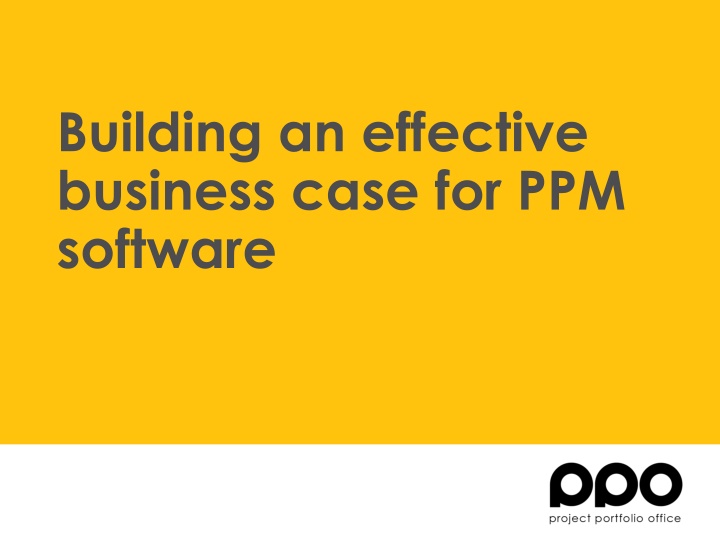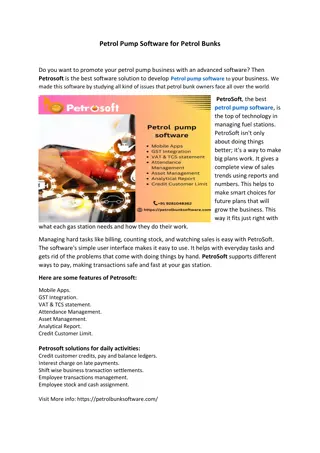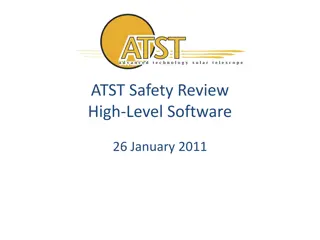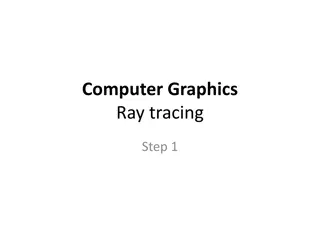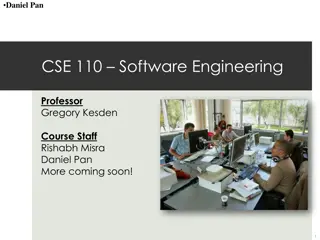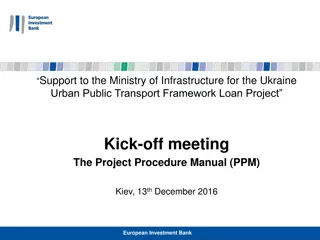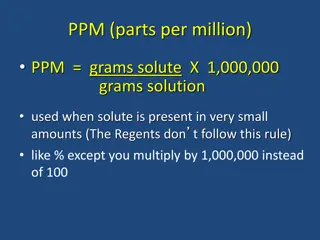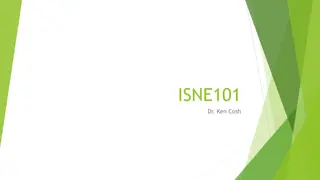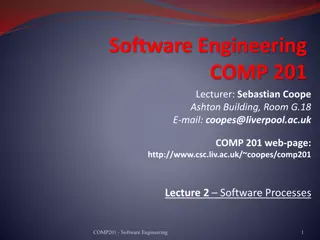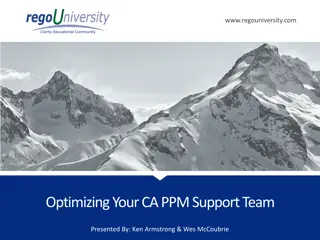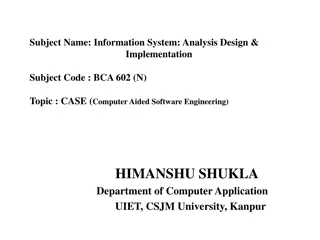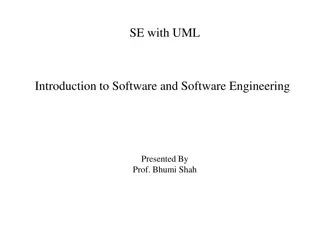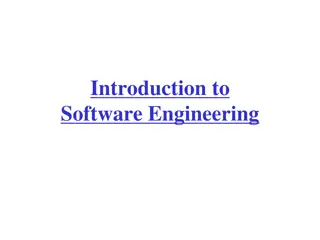Building an Effective Business Case for PPM Software
Provide an executive summary, describe business objectives, highlight PMO challenges, discuss tangible and intangible benefits, outline cost savings, and include implementation costs associated with PPM software.
Uploaded on Mar 15, 2025 | 0 Views
Download Presentation

Please find below an Image/Link to download the presentation.
The content on the website is provided AS IS for your information and personal use only. It may not be sold, licensed, or shared on other websites without obtaining consent from the author.If you encounter any issues during the download, it is possible that the publisher has removed the file from their server.
You are allowed to download the files provided on this website for personal or commercial use, subject to the condition that they are used lawfully. All files are the property of their respective owners.
The content on the website is provided AS IS for your information and personal use only. It may not be sold, licensed, or shared on other websites without obtaining consent from the author.
E N D
Presentation Transcript
Building an effective business case for PPM software
Executive Summary Provide a brief overview of what will be covered in the following sections.
Business Objectives Describe how the PMO objectives support the business goals. Outline what you ll be able to do that you can t do now and what requirements the PPM software should have to support your team or department s ability to solve their problems and/or accomplish their goals
PMO Challenges & why PPM software is necessary Provide an assessment of the current state around project success, failure rates, project management maturity and project processes.
Tangible and Intangible Benefits Highlight the expected benefits, including quantifiable benefits, such as time and money saved, as well as the qualitative benefits, such as increased collaboration and stakeholder satisfaction
Tangible and Intangible Benefits Objective Decrease number of team meetings by [xx]% over [time frame] Increase budget adherence by [xx]% over [time frame] Increase on-time project delivery by [xx]% over [time frame] Decrease number of audit findings by [xx]% over [time frame] Benefit Measure Current Target X X X X X X X X
Cost Savings With the implementation of PPM software organisations can expect to attribute resource and technology to the use of a single PPM tool. List the savings related to technology consolidation and/or replacement, resource overhead, ongoing maintenance costs, etc.
Implementation Cost Include a table of the costs associated with the software purchase and implementation. This includes people, process and technology. These costs will vary for Software-as-a-Service and on- premise solutions. Include both physical costs, such as the hardware costs in the case of an on-premise solution, number and price of the software licenses, as well as costs that are harder to pin down, such as the time required to implement and learn a new system. Remember to include both once-off and recurring costs.
Once-Off Costs Description Configuration and set- up costs Type Dependent of complexity of requirements As needed Number of users Internal resource rate cost Frequency Once-Off Estimate X Data migration Training Cost Internal costs to run the implementation project Communication and change management Once-Off Once-Off Once-Off X X External consultants / Internal resource cost Once-Off X
Recurring Costs Description Software licence cost Type Number of users Frequency Annual/ Monthly Annual/ Monthly/ Inclusive of licence cost Estimate X Software maintenance and support costs As needed X
Return on Investment / Payback period A typical Return on Investment (RoI) analysis looks at the costs versus the benefits, and how long it will take to realise the benefits.
Solution Evaluation If you re not sure what to look for, it s easy to get overwhelmed when you compare project portfolio management software. List the functionality required and whether the shortlisted vendors support the functionality in a table format.
Solution Evaluation Portfolio Management and Prioritisation Allows for simple or complex categorisation models Includes automated, manual, simple or complex prioritisation models; Allows for the collection of all demand and required projects Graphical portfolio and prioritisation dashboards with drill down capability Yes No
Execution Timeline Depending on the complexity of the requirements, expect a PPM software implementation to take anything from 3 to 24 months for a successful implementation. Work with the vendors ahead of time on the implementation approach and timeline. This will provide your audience with an idea of what to expect during the implementation.
Implementation Approach Detail the implementation options and provide a recommendation on the approach that will generate the most business value in the shortest time frame.
